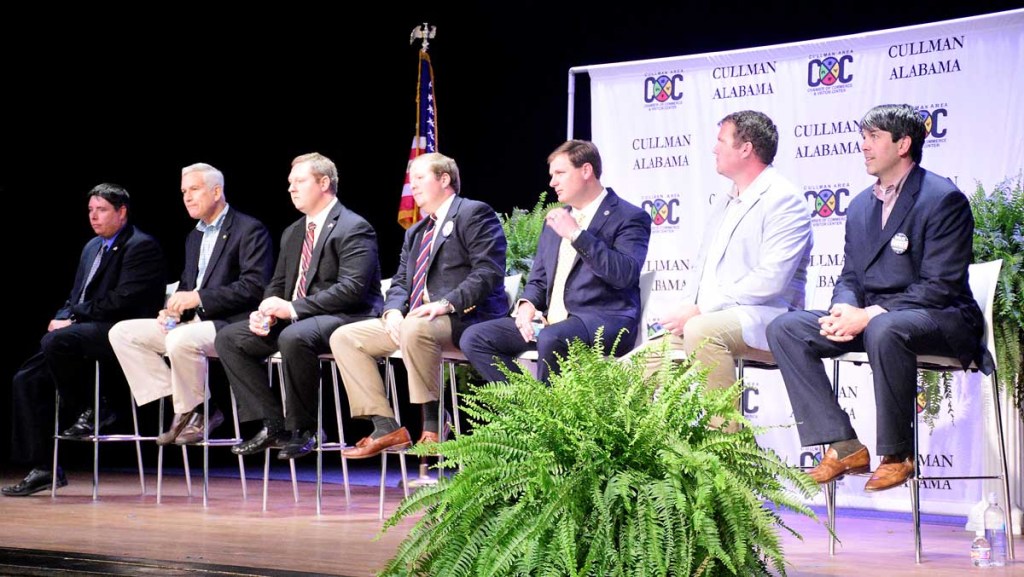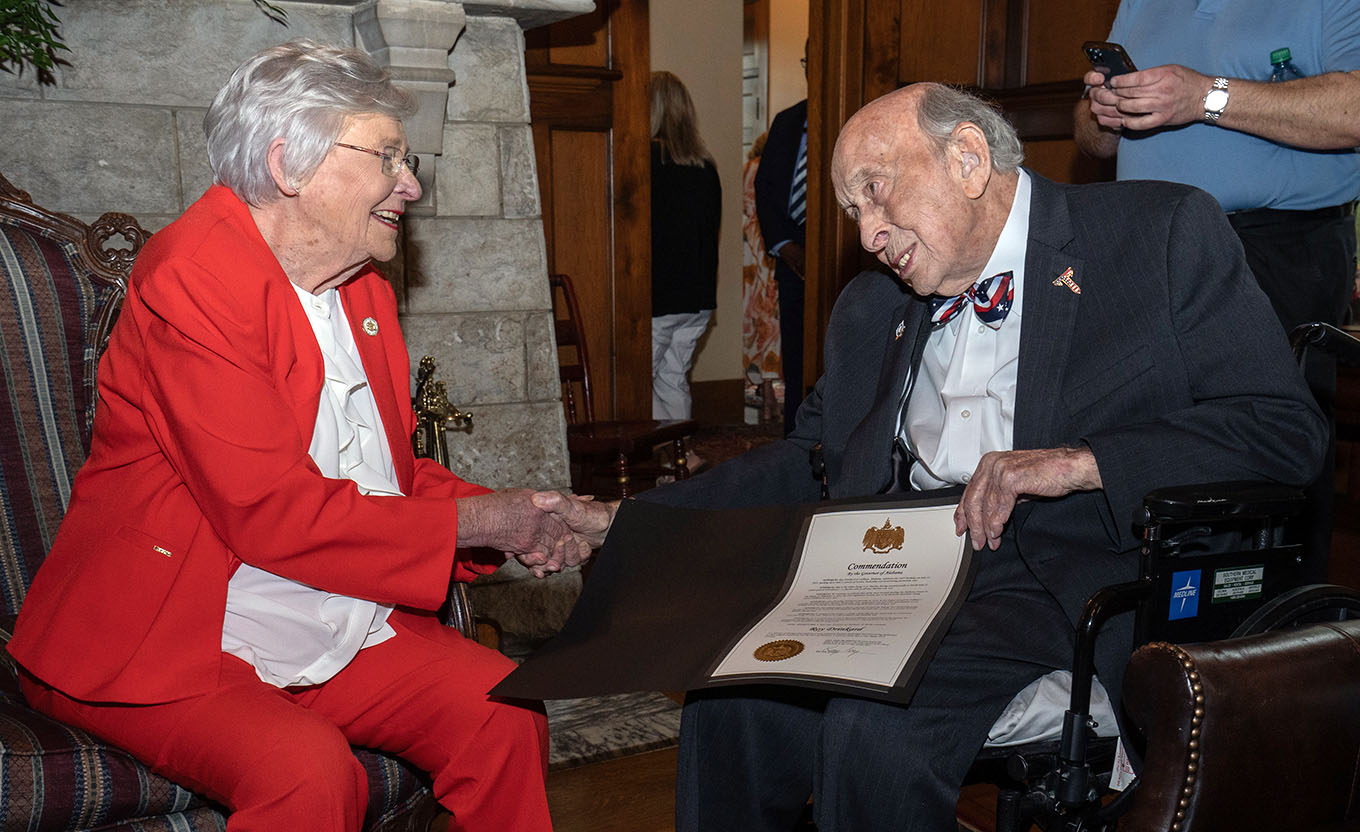Senate, House candidates cover range of issues at Friday event
Published 5:00 am Saturday, April 28, 2018

- From left, House District 9 candidate, James Bowling; Senate District 4 incumbent, Paul Bussman; House District 9 candidate, Justin Morrow; House District 12 candidate, Alex Chaney; House District 9 candidate ,Scott Stadthagen; House District 12 incumbent, Corey Harbison; and Senate District 4 candidate, Garlan Gudger.
Candidates for Cullman County’s state House and Senate seats got another chance to make their pitches to the area Friday afternoon.
The Cullman Area Chamber of Commerce’s 2018 State of Our Communities event featured a Legislative Forum with several of the candidates for state House and Senate seats.
Trending
The candidates included, incumbent Paul Bussman and Garlan Gudger for Senate District 4; incumbent Corey Harbison and Alex Chaney for House District 12; and James Bowling, Justin Morrow and Scott Stadthagen for the House District 9 seat currently held by Ed Henry, who is not running for re-election.
Candidates were asked how they would handle the state’s education budget and make sure that the money is going to fund the education of the children.
Bussman said the biggest problem with the state education system is the higher education lobby that is pulling funding from K-12 and community colleges, and he has spent the last two years fighting for K-12 in Montgomery.
“First off, you’ve got to have somebody who is willing to stand up to higher education,” he said. “They dictate who gets what and how much they get.”
Higher education will go buy a piece of property, and K-12 will foot 73 percent of the bill, which does not make sense, Bussman said.
“That’s wrong,” he said.
Trending
Morrow said a skilled labor position can pay just as much or more of a position that requires a college degree, and Alabama has worked to bring in more industrial jobs that will need people with those skills.
“I realize that college is not for everyone,” he said. “We need to be pushing more trade school involvement. I would love to see more investment from the state and from business partners around the state with trade schools and tech schools.”
To fill the jobs that are coming in, the state needs to do more to help schools have more technical education, Morrow said.
Chaney said Cullman County has an excellent school system and Wallace State’s presence is great for technical training or advancing to a four-year school.
Cullman County may have a good system in place, but other surrounding areas may not, and technical training is going to be important for the future of the state’s economy, he said.
“I would like to see more technical programs like Wallace across the state,” he said. “We have all these businesses coming into Cullman County, and we need that education, which is great, but we need to have the education to have those people to be able to work in those positions when they come.”
Stadthagen agreed with Bussman that the state needs to make sure money is going to the students by attacking earmarks.
“We need to find where this money’s going, and we need to stand up for our teachers and our education system,” he said.
The workforce in the state is aging, and the stigma that has been attached to vocational schools will soon create a shortage in workers, Stadthagen said.
“In another 10 years when those guys can’t do it any more, we’re in trouble,” he said.
Harbison said Cullman has great industries already in place, and some of those plants could look to invest in training programs to help train the next generation of workers.
Part of that will also include removing the stigma from learning a trade, he said.
“There’s no problem in going to trade school,” he said. “I think that it’s important that they learn a trade.”
The state education budget is also being chipped away by the growing number of city school districts that are breaking away from counties and causing a bigger split in where the funding is going, Harbison said.
Contrary to what a few other candidates said, Gudger said he did not believe students were averse to going to trade schools.
“Today, we talk about that stigma because that’s what I remember, that’s what my parents remember, but there’s not one,” he said.
Students are today are wanting to go to school for training as welders, electricians, robotics instructors, cosmetologists or any other trade, Gudger said.
“They’re using their hands, they’re using their creativity and their imagination, and they’re making money,” he said. “More money that they would going to a four-year school.”
Bowling said he has been pushing for the implementation of more trade schools for the past several years, but the state education system has not prepared its students for the jobs that are available and are going to be available.
“I am a tradesman, I’m an industrial maintenance mechanic,” he said. “I’ve been preaching about technical school since 2002.”
Had people taken the initiative in the past, the area would be much better prepared for new industries like the new Toyota-Mazda plant being built in Madison, Bowling said.
“We have a lot to do on that front to bring more jobs in,” he said. “And it’s going to be through our workforce and that’s going to come out of our high schools partnering with the different companies to have co-op programs.”





